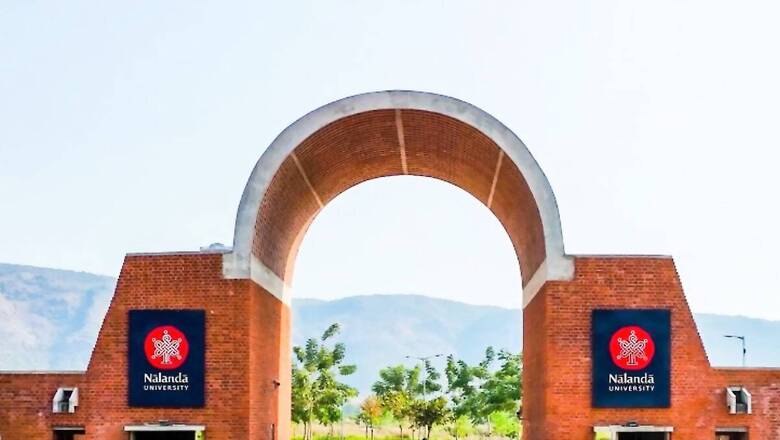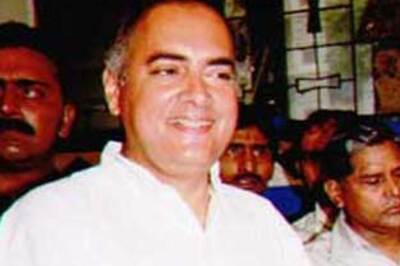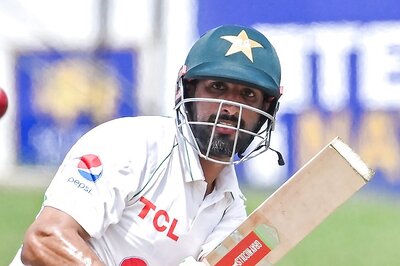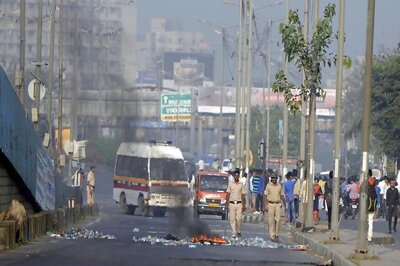
views
“Nalanda is a symbol of India’s academic heritage and vibrant cultural exchange. Nalanda is not just a name. Nalanda is an identity, an honour, a value, a mantra, a pride and a saga. This revival is going to start a golden age for India. Nalanda is not just a renaissance of India’s past. The heritage of many countries of the world and Asia is linked to it. India has lived and demonstrated sustainability as a model for centuries. We move forward with progress and environment together.” These profound words by Prime Minister Narendra Modi capture the true essence of Nalanda.
“My mission is that India becomes the centre of education and knowledge for the world. My mission is that India should again be recognised as the most prominent knowledge centre of the world. Our endeavour is to have the most comprehensive and complete skilling system in the world in India and for India to have the most advanced research-oriented higher education system in the world. I have faith that Nalanda will become an important centre of global cause,” PM Modi further stated.
Last month, Prime Minister Modi inaugurated the new campus of Nalanda University in Rajgir, Bihar. The University is conceived as a collaboration between India and East Asia Summit (EAS) countries. Several eminent people, including the Heads of Mission of 17 countries, attended the inauguration ceremony. Addressing the gathering, Modi, who was visiting Nalanda within 10 days of taking oath as the prime minister for the third term, said that it was a positive indication towards the developmental journey of India. Nalanda is not merely a name; it is an identity, a regard, a root, a mantra. Nalanda is the proclamation of the truth that knowledge cannot be destroyed even when books are consumed by fire.
The revival of Nalanda near its ancient ruins will showcase India’s capabilities to the world. It will demonstrate that nations with strong human values are capable of creating a better world by rejuvenating history. Nalanda carries the heritage not just of India, but of the world and Asia as a whole. Its revival is not restricted to Indian aspects alone. Nalanda was once a vibrant centre of India’s culture and traditions. Its name signifies the continuous flow of knowledge and education, reflecting India’s longstanding approach to learning. Education transcends boundaries, inculcating values and shaping thought. Students are admitted to Nalanda University irrespective of their identities and nationalities, with students from more than 20 countries already studying there – a perfect example of ‘Vasudhaiva Kutumbakam’.
Prime Minister Modi has repeatedly highlighted the Indian tradition of viewing education as a tool for human welfare, with International Yoga Day serving as a prime example. Despite developing numerous strands of yoga, India never sought to monopolise it. Similarly, India shared Ayurveda with the world. In India, we have always striven for progress in harmony with environmental protection. This ethos has led to initiatives like Mission LiFE and the International Solar Alliance under Prime Minister Modi’s leadership. The Nalanda campus, with its pioneering Net Zero Energy, Net Zero Emission, Net Zero Water, and Net Zero Waste model, will further exemplify this spirit of sustainability.
The development of education strengthens both the economy and culture, as demonstrated by global experiences, particularly in developed countries. India, working towards its goal of becoming a developed nation by 2047, is actively transforming its education system. Narendra Modi’s mission is for India to be recognised once again as the world’s preeminent knowledge centre. Noted initiatives by the Modi government, such as Atal Tinkering Labs catering to over a crore children, the surge in scientific interest generated by Chandrayaan 3.0 and Gaganyaan, and Startup India – which has led to 1.30 lakh startups in India, up from just a few hundred a decade ago – are groundbreaking in numerous ways. Furthermore, the filing of a record number of patents and research papers, coupled with a Rs 1 lakh crore worth of research corpus over the past 10 years, is adding to India’s scientific temper.
The recent improvement in the performance of India’s universities in global rankings is encouraging news. A case in point is the rise in the number of Indian educational institutions featuring in the QS Ranking, from 9 to 46, and in the Times Higher Education Impact Ranking, from 13 to 100. In the last decade, India has witnessed the establishment of one university every week, a new ITI every day, an Atal Tinkering Lab every three days, and two new colleges every day. India is now home to 23 IITs, while the number of IIMs has increased from 13 to 21, and AIIMS have almost tripled to 22 over the past ten years. Thanks to Prime Minister Modi’s steadfast focus on education, the number of medical colleges has also nearly doubled in this period. The New Educational Policy (NEP 2020), has given a new dimension to the dreams of India’s youth, along with collaborations with foreign universities and the opening of new campuses of international universities like Deakin and Wollongong.
India is the country of Lord Buddha and the world wishes to walk shoulder to shoulder with the mother of democracy. When India says ‘One Earth, One Family, and One Future’, the world stands with it. When India says ‘One Sun, One World, One Grid’, it is considered the way of the future for the world. When India says ‘One Earth, One Health’, the world respects and accepts its views. The land of Nalanda can give a new dimension to this feeling of universal brotherhood. And indeed, if there is a leader who deserves unequivocal credit for resurrecting the spirit that Nalanda University embodies, it is PM Modi, whose tireless global outreach has borne tremendous results.
“Be Curious, Be Courageous and, above all, Be Kind”, in line with Nalanda’s logo for positive change in society, are values that Narendra Modi not only believes in but embodies in his daily life as the undisputed leader of the world’s largest democracy. Nalanda is poised to become an important centre for global causes. Nalanda University has deep historical roots. The original Nalanda University, established around 1,600 years ago, is considered among the world’s first residential universities. Its ruins were declared a UNESCO World Heritage Site in 2016.
The Nalanda University Campus boasts two academic blocks with 40 classrooms, providing a total seating capacity of around 1,900. It has two auditoriums, each with a capacity of 300 seats, a student hostel accommodating around 550 students, and various other facilities. These include an international centre, an amphitheatre with a capacity of up to 2,000 individuals, a faculty club, and a sports complex. The campus is a ‘Net Zero’ green campus – self-sustainable with a solar plant, domestic and drinking water treatment plants, a water recycling plant for reusing wastewater, 100 acres of water bodies, and many other environmentally friendly facilities.
Returning to the present day, the NEP 2020 replaced the previous National Policy on Education, 1986. It is a pity that between 1986 and 2014, despite being in power for the longest time, barring a few years, the Congress never deemed it necessary to focus on education or youth. It is to the immense credit of Prime Minister Modi that we finally got a comprehensive education policy in 2020, addressing both elementary and higher education, as well as vocational training across rural and urban India. The policy aims to transform India’s education system by 2030.
The National Education Policy 2020 envisions a substantial transformation in education through a system rooted in Indian ethos. It aims to contribute directly to India’s sustainable development into an equitable and vibrant knowledge society by providing high-quality education for all. One of the primary objectives of NEP 2020 is to improve the overall quality of education at all levels. Promoting equity and inclusion by ensuring access to quality education for all children, regardless of background, is the fundamental ‘mantra’ of the Modi government. The resurrection of Nalanda is therefore a testament to PM Modi’s broader vision of contemporary education that takes pride in its glorious past, while taking a leap of faith into a brighter future.
Sanju Verma is an Economist, National Spokesperson of the BJP and the Bestselling Author of ‘The Modi Gambit’. Views expressed in the above piece are personal and solely those of the author. They do not necessarily reflect News18’s views.




















Comments
0 comment